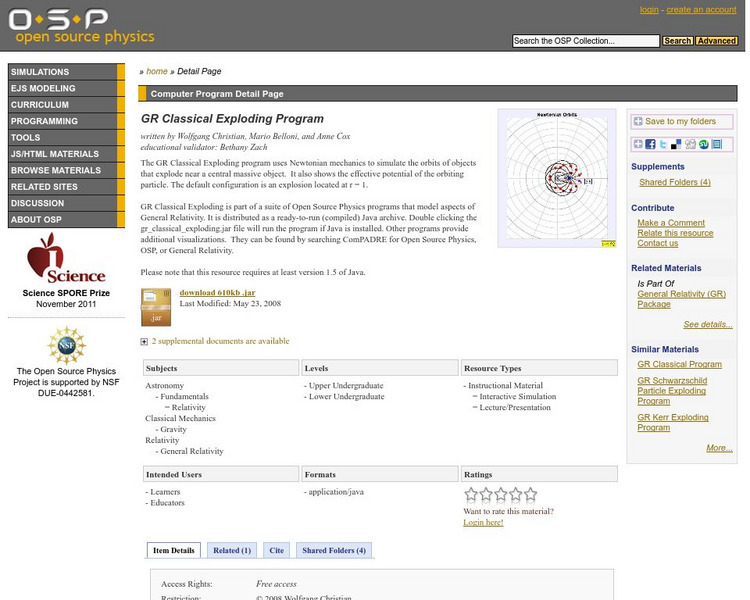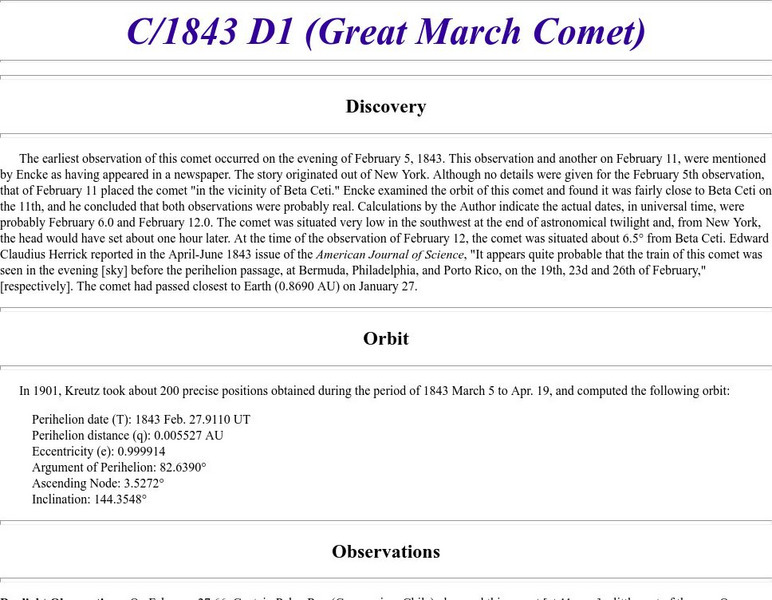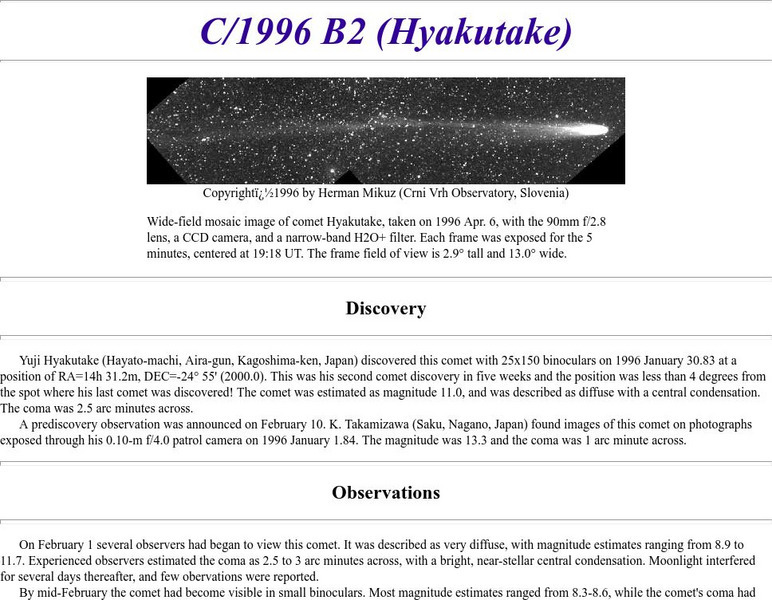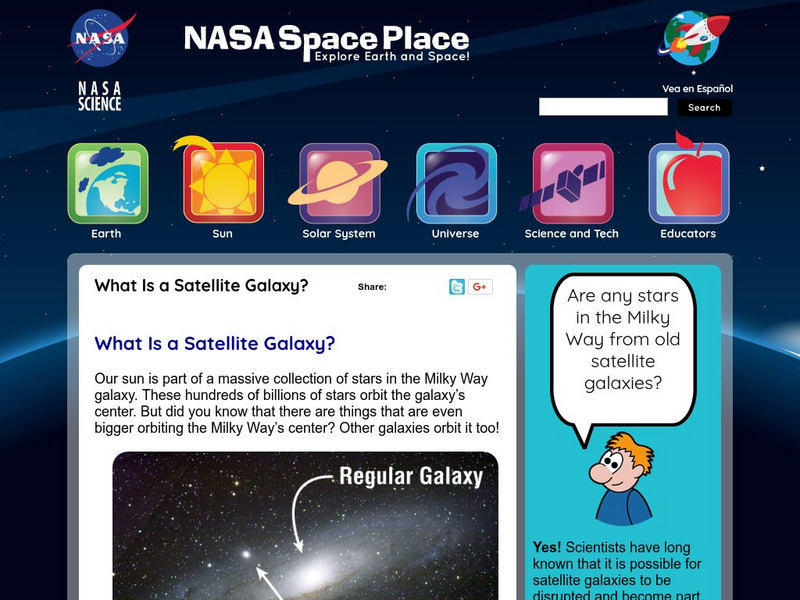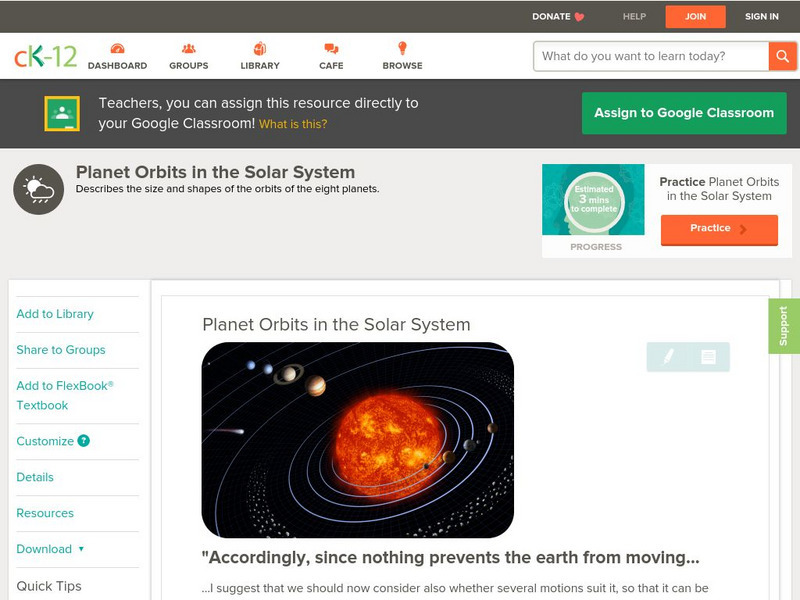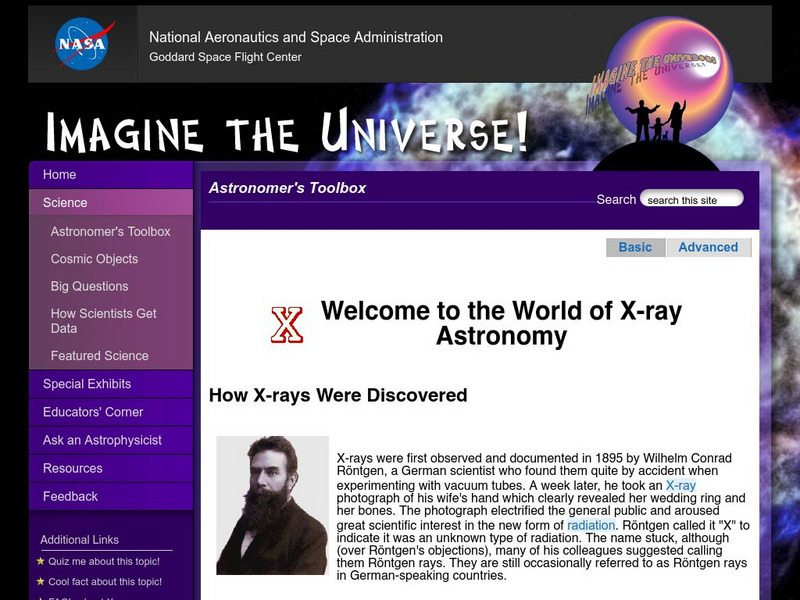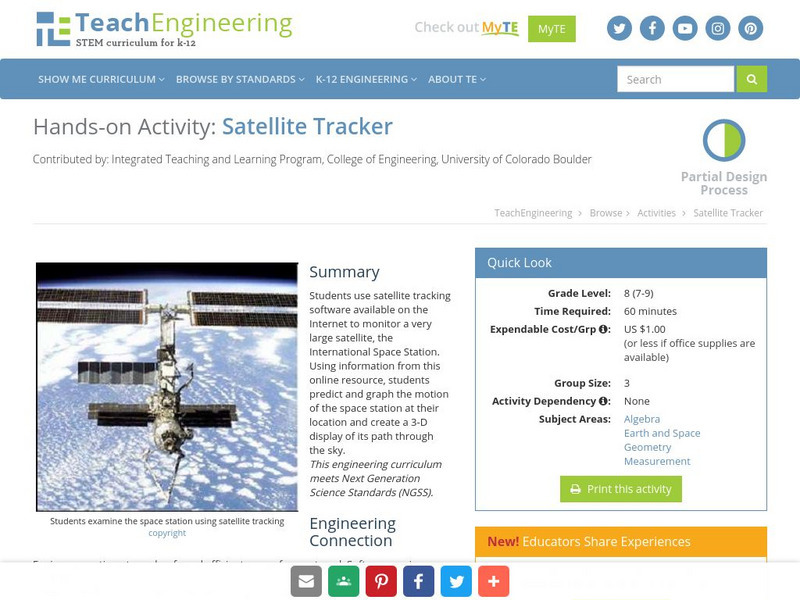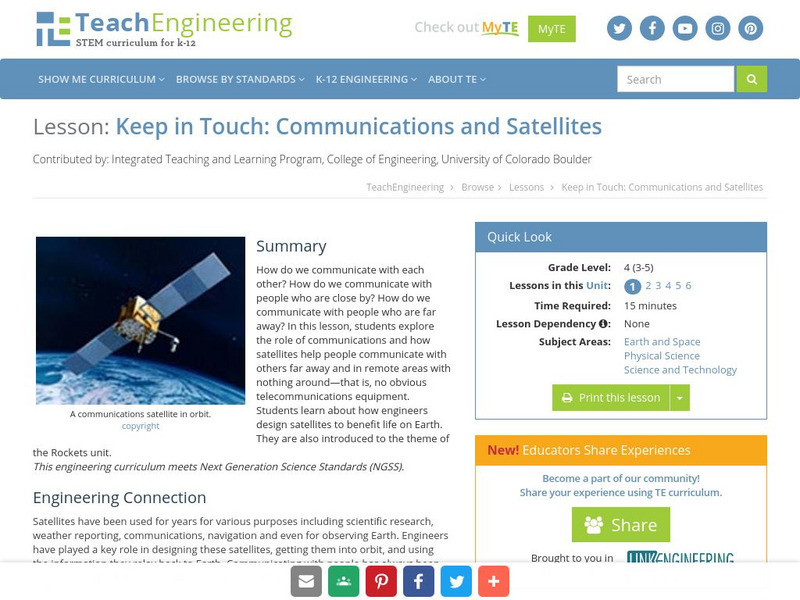Georgia State University
Georgia State University: Hyper Physics: Hund's Rules
A complete overview of Hund's rules including exceptions.
Texas Instruments
Texas Instruments: Numb3 Rs: Implicit Orbits
Based off of the hit television show NUMB3RS, this lesson describes what would happen to various satellites if their planets vanished. Implicit differentiation is used to determine the tangent to each satellite's orbit, which is the path...
NOAA
Noaa: Satellites in Orbit [Pdf]
Construct a model that helps to show how satellites stay in orbit around the Earth. Then see how a flashlight can help explain how a satellite can send messages to different locations.
Crescent Public Schools
The Internet Science Room: Electron Configuration and Orbital Diagrams
Students use this chemistry tutorial to guide their understand of electron configuration and orbital diagrams.
American Association of Physics Teachers
Com Padre Digital Library: Open Source Physics: Schwarzschild Particle Energy
Apply the Schwarzschild metric to an object orbiting about a black hole. Manipulate the energy and angular momentum of the orbiting particle and observe the results.
American Association of Physics Teachers
Com Padre Digital Library: Open Source Physics: Gr Classical Exploding Program
Simulation of the orbital dynamics of objects exploding near a large body in space.
PBS
Pbs Kids: Martha Speaks: Socks in Space
After learning seven space-themed vocabulary words, students will go on a space adventure collecting socks. After completing five levels, students will test their new knowledge by matching five words with the pictures that show their...
NASA
Nasa: Wally Schirra Mercury 8 Summary
A brief outline of the third American Earth orbit mission. Links to other NASA websites are available.
Other
Cometography.com: C/1843 D1 (Great March Comet)
This site provides a detailed overview of the comet C/1843 D1 (the great march comet of 1843). Content includes discovery, orbit, and observational information.
Other
Cometography.com: C/1996 B2 (Hyakutake)
This site provides a detailed overview of the comet C/1996 B2 (Hyakutake). Content includes discovery, observational, and orbit information, as well as several images.
NASA
Nasa: Space Place: What Is a Satellite Galaxy?
Find out about the behavior and characteristics of the many satellite galaxies that orbit other galaxies.
CK-12 Foundation
Ck 12: Earth Science: Planet Orbits in the Solar System
[Free Registration/Login may be required to access all resource tools.] Looks at the size and shape of planet orbits.
CK-12 Foundation
Ck 12: Earth Science: Planets of the Solar System
[Free Registration/Login may be required to access all resource tools.] Examines the eight planets of our solar system and their orbits and rotation.
NASA
Nasa: Imagine the Universe: How Big Is That Star
This 2-5 day lesson plan investigates the diameter, radius and mass among several stars in order to understand stellar behavior, particularly in a binary system.
NASA
Nasa: Imagine the Universe: Welcome to the World of X Ray Astronomy
Site recounts how X-rays were discovered as well as who discovered them. Offers graphics, links to facts on this topic, a quiz, and teacher resources.
TeachEngineering
Teach Engineering: A Roundabout Way to Mars
Students explore orbit transfers and, specifically, Hohmann transfers. They investigate the orbits of Earth and Mars by using cardboard and string. Students learn about the planets' orbits around the sun, and about a transfer orbit from...
TeachEngineering
Teach Engineering: Satellite Tracker
Students use satellite tracking software available on the Internet to monitor a very large satellite, the International Space Station. Using information from this online resource, students predict and graph the motion of the space...
TeachEngineering
Teach Engineering: Keep in Touch: Communications and Satellites
How do we communicate with each other? How do we communicate with people who are close by? How do we communicate with people who are far away? In this lesson, young scholars will explore the role of communications and how satellites help...
TeachEngineering
Teach Engineering: Where Am I: Navigation and Satellites
How do we know where we are? In this lesson, students explore the concept of triangulation that is used in navigation satellites and global positioning systems designed by engineers. Also, students learn how these technologies can help...
Read Works
Read Works: Objects in Space
[Free Registration/Login Required] An informational text about some of the objects circling the Earth. A question sheet is available to help students build skills in reading comprehension.
Read Works
Read Works: What's Up in Space?
[Free Registration/Login Required] An informational text about outer space. A question sheet is available to help students build skills in reading comprehension.
NASA
Nasa Star Child: Space Travel (Level 1)
Learn about the history of space travel. Audio content is included as well as vocabulary words linked to a glossary of terms.
Physics Classroom
The Physics Classroom: Circular Motion Principles for Satellites
From The Physics Classroom. Uses easy- to-understand language to discuss how circular motion principles apply to the motion of satellites. Describes the tangential velocity and centripetal acceleration of a satellite. Includes many...
Physics Classroom
The Physics Classroom: Mathematics of Satellite Motion
The mathematics associated with the motion of satellites is described. Equations (for period, velocity, acceleration and force) are stated, symbols described, and sample problems solved. Includes five practice problems with solutions and...



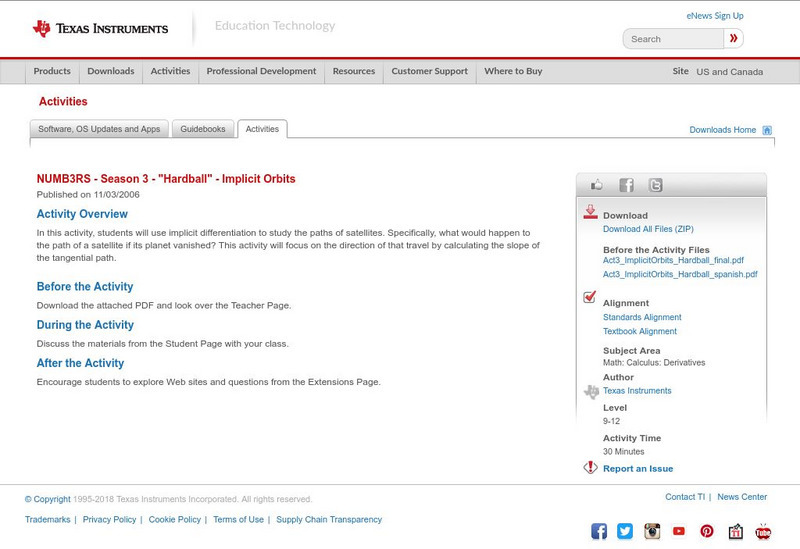
![Noaa: Satellites in Orbit [Pdf] Activity Noaa: Satellites in Orbit [Pdf] Activity](https://d15y2dacu3jp90.cloudfront.net/images/attachment_defaults/resource/large/FPO-knovation.png)

